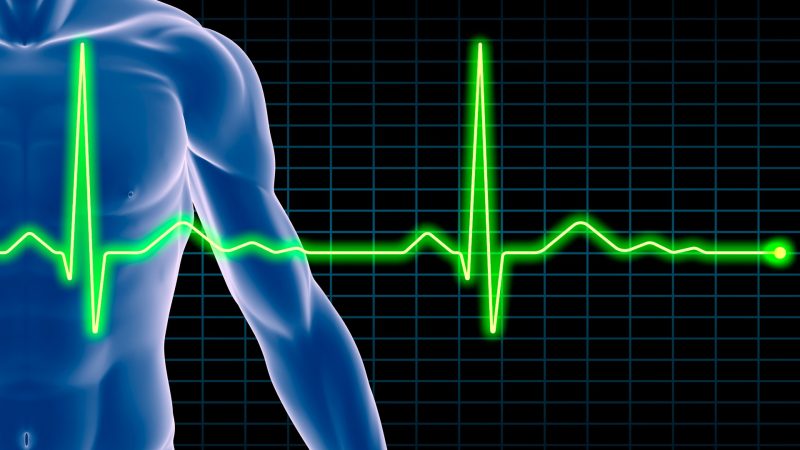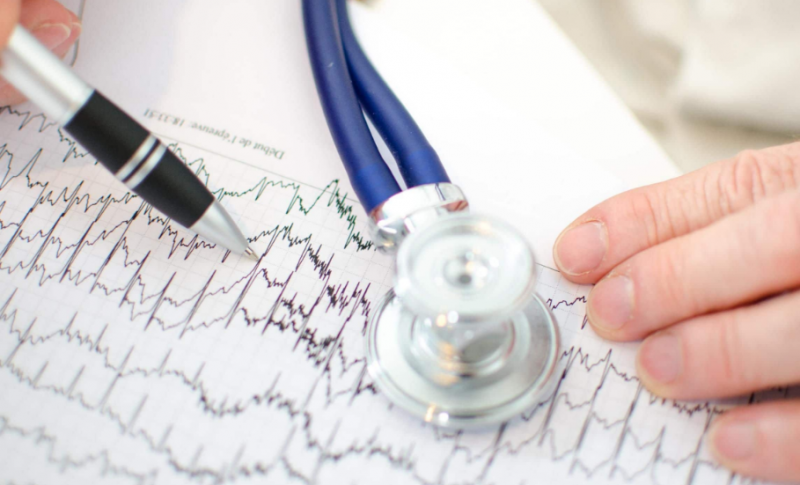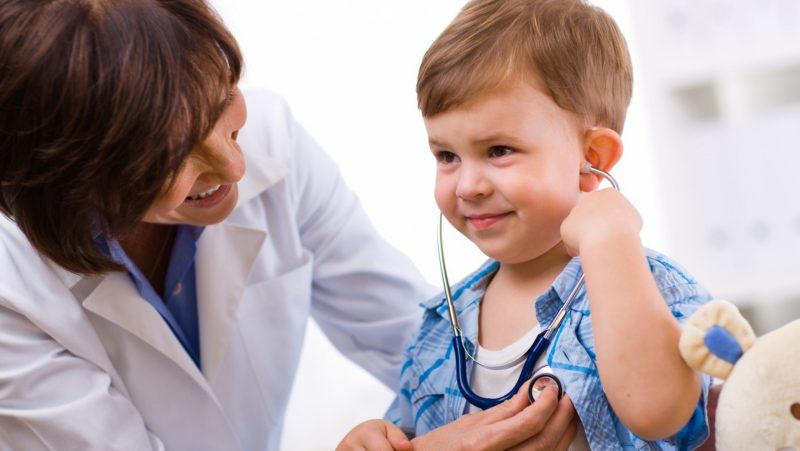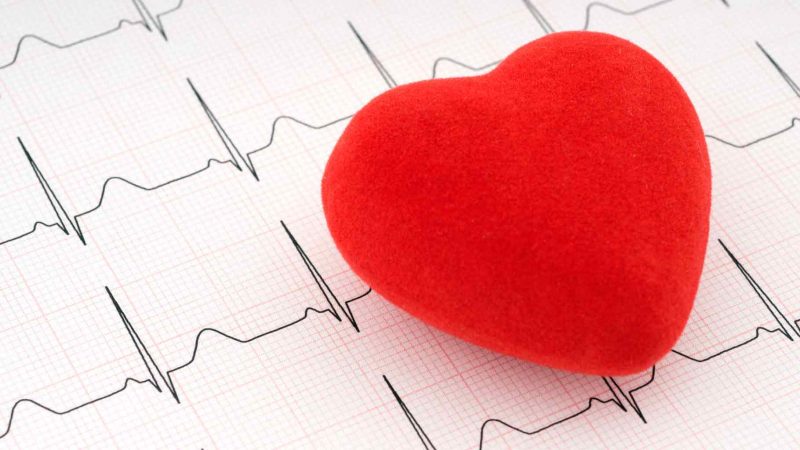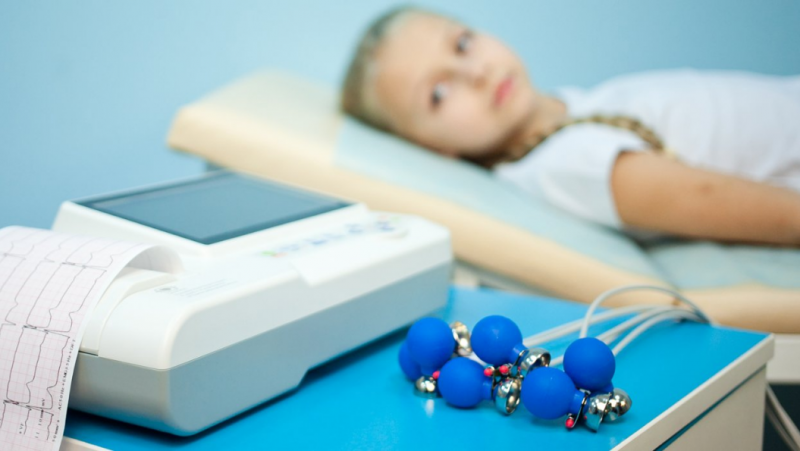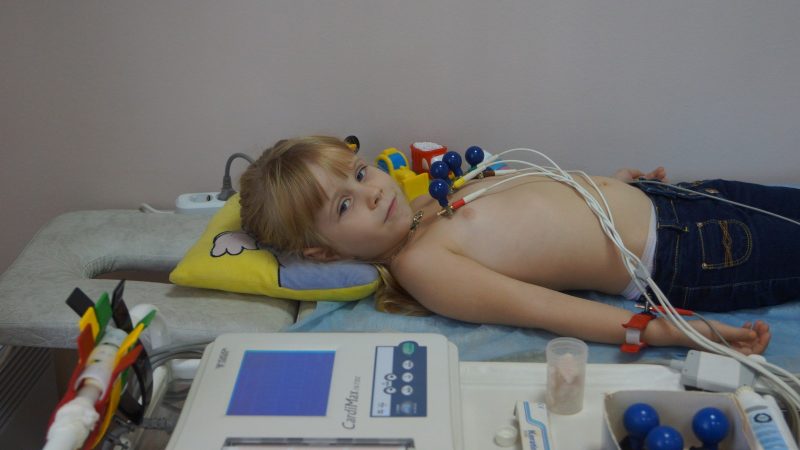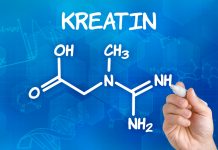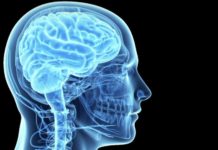When the heart hurts, it becomes especially scary, because there is a danger to life. And when a small baby heart causes alarm, the danger of the situation increases. Sinus arrhythmia in a child is one of the frequent pathologies in childhood. What causes it, what are the signs of the disease and how it should be treated - useful information for parents in our article.
Material Content:
What is sinus arrhythmia of the heart?
The term "arrhythmia" refers to a disease of the heart and the entire vascular system, which is accompanied by changes in the rhythm of the myocardium: the heart beats either too often, or slower than normal, or irregular strokes.
In children at any age, such manifestations are often found. There are various types of arrhythmias. Violations are more common due to the fact that pulses in the sinus node are formed irregularly or are poorly conducted to the myocardium. This type of arrhythmia is called sinus.
Pathology is almost always characterized by a normal number of beats per minute for a certain age, but a malfunction in the duration of the intervals between contractions.
Tachyarrhythmia is rare when the heartbeat is rapid, or bradyarrhythmia, when the myocardium contracts more slowly than normal.
In pediatric cardiology, the most vulnerable periods for the appearance of sinus arrhythmia are indicated:
- about six months;
- at the age of 4 - 5 years;
- from six to eight years;
- in adolescence.
Doctors recommend that parents during these periods be especially attentive to the health of the child and attend the planned examinations with doctors along with him.
Types and stages in a child
Cardiologists distinguish between various pathology options, depending on the causes that caused them, severity and signs.
Sinus arrhythmias are of 3 types:
- Respiratory, when the rhythm frequency changes depending on whether the child takes a breath (increases) or exhale (decreases). This type is most often found, it is not considered a deviation from the norm. The younger the children, the more clearly expressed is respiratory arrhythmia. Symptoms of sinus respiratory arrhythmia are aggravated by premature birth, rickets and encephalopathy during gestation.
- Functional arrhythmia, diagnosed not so often, does not depend on respiration. Deviations in the structure or functionality of the heart muscle, as well as malfunctions of other body systems, in particular the nervous system, become its cause.
- The organic type is the most dangerous, because it is associated with cardinal disturbances in the work of the myocardium or conduction of impulses. This failure becomes a companion of serious pathologies, such as heart disease, myocarditis.
There is also a classification of arrhythmias by origin:
- congenital - appeared during the period of intrauterine development;
- acquired - arising from functional disorders;
- genetic - inherited from parents.
Cardiologists distinguish the stages of the disease, identifying them by the intensity of the symptoms and the danger of the course of arrhythmia.
At an early age, mild sinus arrhythmia with mild symptoms that does not require special treatment is most often found.
Specialists prescribe light medications to normalize the functioning of the nervous system and give recommendations on lifestyle.
But pronounced sinus arrhythmia in a child is less common. This stage is more characteristic of adult patients with serious cardiac abnormalities. The disease has severe, pronounced symptoms and requires complex therapy.
Causes and Risk Factors
Among the possible causes affecting the development of arrhythmia, there are three groups:
- cardiac;
- extracardiac
- mixed.
The first group, as the name implies, includes disorders of the cardiovascular system. In childhood, these causes are rare, but they must first be ruled out when diagnosing.
Among them:
- heart disease (congenital or acquired);
- myocarditis;
- cardiomyopathy;
- heart injuries;
- myocardial tumors;
- heart abnormalities;
- severe infectious diseases (pneumonia, tonsillitis, sepsis, diphtheria) that cause dehydration;
- intoxication.
Most often, in children, sinus arrhythmia of the heart is of extracardial origin.
The reasons are often abnormalities, leading to the appearance of pathologies of the myocardium.
Also, rhythm failures are affected by:
- increased load on the child’s nervous system - feelings, fear, stress;
- hormonal surges (in adolescence);
- dysfunction of the endocrine system;
- anemia, blood diseases;
- heavy physical exertion;
- obesity.
A mixed type of arrhythmia is diagnosed in the presence of both cardiac and extracardiac causes that affect rhythm malfunctions.
Symptoms and signs in children
It is very difficult to determine the pathology according to the symptoms in young patients, especially in infants who cannot tell about their feelings. Therefore, in most cases, arrhythmia is diagnosed by chance, during a regular medical examination and an ECG.
But still careful parents can recognize the signs of a dangerous pathology in the baby in time.
It:
- trouble sleeping, frequent waking ups;
- restlessness, causeless crying;
- shortness of breath after small physical exercises;
- hyperhidrosis;
- small weight gain;
- loss of appetite, lethargy when sucking;
- pallor and blueness of the skin;
- throbbing veins on the neck.
At an older age, the child can already describe the alarming symptoms, indicating a possible arrhythmia.
Among them:
- interruptions in the heartbeat;
- especially strong shocks;
- a feeling of heaviness or spasm in the region of the heart;
- dizziness, fainting;
- feeling of weakness, fatigue;
- low blood pressure;
- deterioration due to physical exertion.
You must immediately respond to such complaints of the child, consult a pediatrician for a comprehensive diagnosis and treatment.
Diagnostic measures
To determine the presence of cardiac arrhythmias, a cardiologist will immediately direct you to electrocardiography. This procedure, carried out in a calm state and after physical exertion (squats, for example), will reveal the presence of arrhythmia and its nature.
But to determine the causes of such a pathology, a more serious examination will be required.
It includes (depending on the symptoms):
- Ultrasound of the heart;
- chest x-ray;
- daily monitoring of ECG (Holter);
- echocardiography;
- stress tests - bicycle ergometry, treadmill test;
- pharmacological tests;
- biochemical blood and urine tests.
Heart rhythm disorder treatment
Cardiology has an integrated approach to the treatment of the disease under discussion. After all, arrhythmia is either a sign of more serious pathologies, or a symptom indicating the need for a change in lifestyle.
Therefore, the treatment of sinus arrhythmia is always a purely individual process, depending on the specific child, his living conditions, type and degree of the disease, and the clinical picture as a whole.
In the case of diagnosing respiratory or functional arrhythmias, medication is not prescribed, only recommendations are given on lifestyle, daily routine and physical activity.
If there are diseases that cause rhythm disturbances, they must be treated.
Comprehensive treatment includes various methods:
- antiarrhythmic drugs;
- analgesics for heart pain;
- sedative medications;
- vitamin complexes;
- massotherapy;
- installation of a pacemaker (in some severe cases).
During treatment, it is important to adhere to the recommendations of the cardiologist on a lifestyle - this will contribute to a speedy recovery.
Basic Rules:
- decrease in the number of sports;
- healthy diet;
- full sleep;
- change in diet (less servings, more meals per day);
- the exclusion of caffeinated products;
- saturation of the body with plant foods;
- compliance with the regime of the day;
- long regular walking, gymnastics (without unnecessary stress);
- reduction in the number of stressful situations;
- refusal of the computer and the TV (or reduction of the time spent behind them).
Prognosis, complications and consequences
In most cases of childhood arrhythmia, it passes almost without a trace. A favorable prognosis will provide a regular examination by a doctor and an ECG once a year.
Complications are caused by atrial fibrillation, a complete transverse block of the heart, or attacks of paroxysmal tachycardia.
Such pathologies are fraught with:
- cardiovascular failure;
- cardiomyopathy;
- asystole (when the heart stops contracting);
- fibrillation (ventricular flutter);
- disability
- fatal.
With the timely detection of the disease, proper treatment and adherence to the doctor’s recommendations on the right lifestyle and nutrition, the child’s arrhythmia is quickly cured without any complications and consequences.
Prevention
To prevent a possible pathology, you need to follow these tips from cardiologists:
- conduct regular scheduled examinations of the child with an ECG;
- eliminate risk factors - stress, increased stress (mental, physical and emotional);
- consult a doctor on time for the diagnosis and treatment of diseases;
- monitor the correct regimen of the day in a child with a full sleep, walks in the fresh air and a balanced diet.
Moderate regular exercise does not harm, but rather helps to improve the well-being of children. A healthy lifestyle helps to prevent not only arrhythmias, but also many other diseases.


